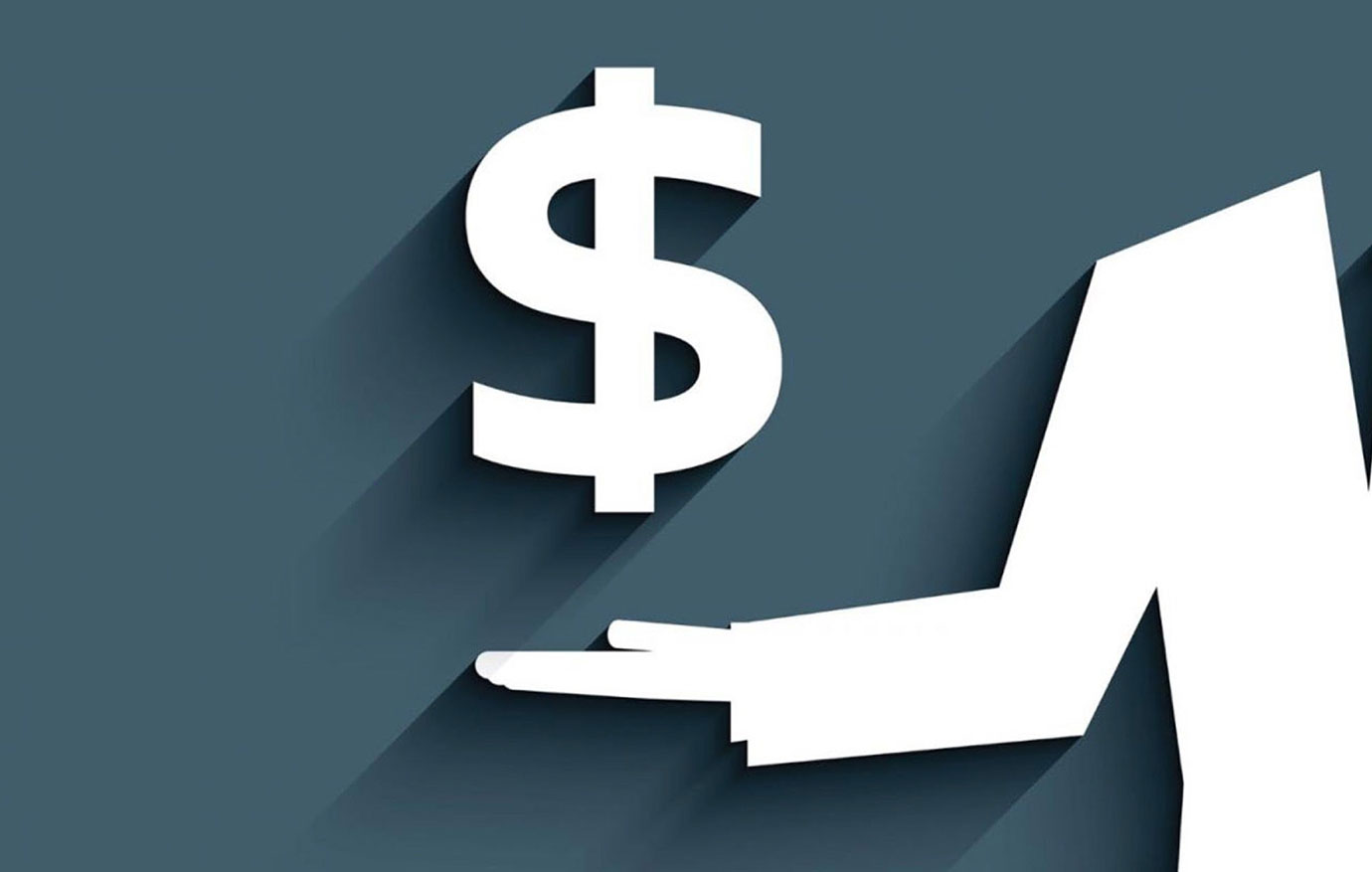
Wages, Unemployment, and Inflation
Our economic system—the market economy or capitalism—is a system of consumers’ supremacy. The customer is sovereign; he is, says a popular slogan, “always right.” Businessmen are under the necessity of turning out what the consumers ask for and they must sell their wares at prices which the consumers can afford and are prepared to pay. A business operation is a manifest failure if the proceeds from the sales do not reimburse the businessman for all he has expended in producing the article. Thus the consumers in buying at a definite price determine also the height of the wages that are paid to all those engaged in the industries.
1. Wages Ultimately Paid by the Consumers
It follows that an employer cannot pay more to an employee than the equivalent of the value the latter’s work, according to the judgment of the buying public, adds to the merchandise. (This is the reason why the movie star gets much more than the charwoman.) If he were to pay more, he would not recover his outlays from the purchasers; he would suffer losses and would finally go bankrupt. In paying wages, the employer acts as a mandatory of the consumers, as it were. It is upon the consumers that the incidence of the wage payments falls. As the immense majority of the goods produced are bought and consumed by people who are themselves receiving wages and salaries, it is obvious that in spending their earnings the wage earners and employees themselves are foremost in determining the height of the compensation they will get.
2. What Makes Wages Rise?
The buyers do not pay for the toil and trouble the worker took nor for the length of time he spent in working. They pay for the products. The better the tools are which the worker uses in his job, the more he can perform in an hour, the higher is, consequently, his remuneration. What makes wages rise and renders the material conditions of the wage earners more satisfactory is improvement in the technological equipment. American wages are higher than wages in other countries because the capital invested per head of the worker is greater and the plants are thereby in the position to use the most efficient tools and machines. What is called the American way of life is the result of the fact that the United States has put fewer obstacles in the way of saving and capital accumulation than other nations. The economic backwardness of such countries as India consists precisely in the fact that their policies hinder both the accumulation of domestic capital and the investment of foreign capital. As the capital required is lacking, the Indian enterprises are prevented from employing sufficient quantities of modern equipment, are therefore producing much less per man-hour, and can only afford to pay wage rates which, compared with American wage rates, appear as shockingly low.
There is only one way that leads to an improvement of the standard of living for the wage-earning masses, viz., the increase in the amount of capital invested. All other methods, however popular they may be, are not only futile, but are actually detrimental to the well-being of those they allegedly want to benefit.
3. What Causes Unemployment
The fundamental question is: is it possible to raise wage rates for all those eager to find jobs above the height they would have attained on an unhampered labor market?
Public opinion believes that the improvement in the conditions of the wage earners is an achievement of the unions and of various legislative measures. It gives to unionism and to legislation credit for the rise in wage rates, the shortening of hours of work, the disappearance of child labor, and many other changes. The prevalence of this belief made unionism popular and is responsible for the trend in labor legislation of the last two decades. As people think that they owe to unionism their high standard of living, they condone violence, coercion, and intimidation on the part of unionized labor and are indifferent to the curtailment of personal freedom inherent in the union-shop and closed-shop clauses. As long as these fallacies prevail upon the minds of the voters, it is vain to expect a resolute departure from the policies that are mistakenly called progressive.
Yet this popular doctrine misconstrues every aspect of economic reality. The height of wage rates at which all those eager to get jobs can be employed depends on the marginal productivity of labor. The more capital—other things being equal—is invested, the higher wages climb on the free labor market, i.e., on the labor market not manipulated by the government and the unions. At these market wage rates all those eager to employ workers can hire as many as they want. At these market wage rates all those who want to be employed can get a job. There prevails on a free labor market a tendency toward full employment. In fact, the policy of letting the free market determine the height of wage rates is the only reasonable and successful full-employment policy. If wage rates, either by union pressure and compulsion or by government decree, are raised above this height, lasting unemployment of a part of the potential labor force develops.
4. Credit Expansion No Substitute for Capital
These opinions are passionately rejected by the union bosses and their followers among politicians and the self-styled intellectuals. The panacea they recommend to fight unemployment is credit expansion and inflation, euphemistically called “an easy money policy.”
As has been pointed out above, an addition to the available stock of capital previously accumulated makes a further improvement of the industries’ technological equipment possible, thus raises the marginal productivity of labor and consequently also wage rates. But credit expansion, whether it is effected by issuing additional banknotes or by granting additional credits on bank accounts subject to check, does not add anything to the nation’s wealth of capital goods. It merely creates the illusion of an increase in the amount of funds available for an expansion of production. Because they can obtain cheaper credit, people erroneously believe that the country’s wealth has thereby been increased and that therefore certain projects that could not be executed before are now feasible. The inauguration of these projects enhances the demand for labor and for raw materials and makes wage rates and commodity prices rise. An artificial boom is kindled.
Under the conditions of this boom, nominal wage rates which before the credit expansion were too high for the state of the market and therefore created unemployment of a part of the potential labor force are no longer too high and the unemployed can get jobs again. However, this happens only because under the changed monetary and credit conditions prices are rising or, what is the same expressed in other words, the purchasing power of the monetary unit drops. Then the same amount of nominal wages, i.e., wage rates expressed in terms of money, means less in real wages, i.e., in terms of commodities that can be bought by the monetary unit. Inflation can cure unemployment only by curtailing the wage earner’s real wages. But then the unions ask for a new increase in wages in order to keep pace with the rising cost of living and we are back where we were before, i.e., in a situation in which large-scale unemployment can only be prevented by a further expansion of credit.
This is what happened in this country as well as in many other countries in the last years. The unions, supported by the government, forced the enterprises to agree to wage rates that went beyond the potential market rates, i.e., the rates which the public was prepared to refund to the employers in purchasing their products. This would have inevitably resulted in rising unemployment figures. But the government policies tried to prevent the emergence of serious unemployment by credit expansion, i.e., inflation. The outcome was rising prices, renewed demands for higher wages and reiterated credit expansion; in short, protracted inflation.
5. Inflation Cannot Go On Endlessly
But finally the authorities become frightened. They know that inflation cannot go on endlessly. If one does not stop in time the pernicious policy of increasing the quantity of money and fiduciary media, the nation’s currency system collapses entirely. The monetary unit’s purchasing power sinks to a point which for all practical purposes is not better than zero. This happened again and again, in this country with the Continental Currency in 1781, in France in 1796, in Germany in 1923. It is never too early for a nation to realize that inflation cannot be considered as a way of life and that it is imperative to return to sound monetary policies. In recognition of these facts the administration and the Federal Reserve authorities some time ago discontinued the policy of progressive credit expansion.
It is not the task of this short article to deal with all the consequences which the termination of inflationary measures brings about. We have only to establish the fact that the return to monetary stability does not generate a crisis. It only brings to light the malinvestments and other mistakes that were made under the hallucination of the illusory prosperity created by the easy money. People become aware of the faults committed and, no longer blinded by the phantom of cheap credit, begin to readjust their activities to the real state of the supply of material factors of production. It is this—certainly painful, but unavoidable—readjustment that constitutes the depression.
6. The Policy of the Unions
One of the unpleasant features of this process of discarding chimeras and returning to a sober estimate of reality concerns the height of wage rates. Under the impact of the progressive inflationary policy the union bureaucracy acquired the habit of asking at regular intervals for wage raises, and business, after some sham resistance, yielded. As a result these rates were at the moment too high for the state of the market and would have brought about a conspicuous amount of unemployment. But the ceaselessly progressive inflation very soon caught up with them. Then the unions asked again for new raises and so on.
7. The Purchasing Power Argument
It does not matter what kind of justification the unions and their henchmen advance in favor of their claims. The unavoidable effects of forcing the employers to remunerate work done at higher rates than those the consumers are willing to restore to them in buying the products are always the same: rising unemployment figures.
At the present juncture the unions try to take up the old, a hundred times refuted purchasing power fable. They declare that putting more money into the hands of the wage earners—by raising wage rates, by increasing the benefits to the unemployed and by embarking upon new public works—would enable the workers to spend more and thereby stimulate business and lead the economy out of the recession into prosperity. This is the spurious pro-inflation argument to make all people happy through printing paper bills. Of course, if the quantity of the circulating media is increased, those into whose pockets the new fictitious wealth comes—whether they are workers or farmers or any other kind of people—will increase their spending. But it is precisely this increase in spending that inevitably brings about a general tendency of all prices to rise or, what is the same expressed in a different way, a drop in the monetary unit’s purchasing power. Thus the help that an inflationary action could give to the wage earners is only of a short duration. To perpetuate it, one would have to resort again and again to new inflationary measures. It is clear that this leads to disaster.
8. Wage Raises as Such Are Not Inflationary
There is a lot of nonsense said about these things. Some people assert that wage raises are “inflationary.” But they are not in themselves inflationary. Nothing is inflationary except inflation, i.e., an increase in the quantity of money in circulation and credit subject to check (check-book money). And under present conditions nobody but the government can bring an inflation into being. What the unions can generate by forcing the employers to accept wage rates higher than the potential market rates is not inflation and not higher commodity prices, but unemployment of a part of the people anxious to get a job. Inflation is a policy to which the government resorts in order to prevent the large-scale unemployment the unions’ wage raising would otherwise bring about.
9. The Dilemma of Present-Day Policies
The dilemma which this country—and no less many other countries—has to face is very serious. The extremely popular method of raising wage rates above the height the unhampered labor market would have established would produce catastrophic mass unemployment if inflationary credit expansion were not to rescue it. But inflation has not only very pernicious social effects. It cannot go on endlessly without resulting in the complete breakdown of the whole monetary system.
Public opinion, entirely under the sway of the fallacious labor union doctrines, sympathizes more or less with the union bosses’ demand for a considerable rise in wage rates. As conditions are today, the unions have the power to make the employers submit to their dictates. They can call strikes and, without being restrained by the authorities, resort with impunity to violence against those willing to work. They are aware of the fact that the enhancement of wage rates will increase the number of jobless. The only remedy they suggest is more ample funds for unemployment compensation and a more ample supply of credit, i.e., inflation. The government, meekly yielding to a misguided public opinion and worried about the outcome of the impending election campaign, has unfortunately already begun to reverse its attempts to return to a sound monetary policy. Thus we are again committed to the pernicious methods of meddling with the supply of money. We are going on with the inflation that with accelerated speed makes the purchasing power of the dollar shrink. Where will it end? This is the question which Mr. Reuther and all the rest never ask.
Only stupendous ignorance can call the policies adopted by the self-styled progressives “pro-labor” policies. The wage earner like every other citizen is firmly interested in the preservation of the dollar’s purchasing power. If, thanks to his union, his weekly earnings are raised above the market rate, he must very soon discover that the upward movement in prices not only deprives him of the advantages he expected, but besides makes the value of his savings, of his insurance policy and of his pension rights dwindle. And, still worse, he may lose his job and will not find another.
10. Insincerity in the Fight against Inflation
All political parties and pressure groups protest that they are opposed to inflation. But what they really mean is that they do not like the unavoidable consequences of inflation, viz., the rise in living costs. Actually they favor all policies that necessarily bring about an increase in the quantity of the circulating media. They ask not only for an easy money policy to make the unions’ endless wage boosting possible but also for more government spending and—at the same time—for tax abatement through raising the exemptions.
Duped by the spurious Marxian concept of irreconcilable conflicts between the interests of the social classes, people assume that the interests of the propertied classes alone are opposed to the unions’ demand for higher wage rates. In fact, the wage earners are no less interested in a return to sound money than any other group or class. A lot has been said in the last months about the harm fraudulent officers have inflicted upon the union membership. But the havoc done to the workers by the unions’ excessive wage boosting is much more detrimental.
It would be an exaggeration to contend that the tactics of the unions are the sole threat to monetary stability and to a reasonable economic policy. Organized wage earners are not the only pressure group whose claims menace today the stability of our monetary system. But they are the most powerful and most influential of these groups and the primary responsibility rests with them.
11. The Importance of Sound Monetary Policies
Capitalism has improved the standard of living of the wage earners to an unprecedented extent. The average American family enjoys today amenities of which, only a hundred years ago, not even the richest nabobs dreamed. All this well-being is conditioned by the increase in savings and capital accumulated; without these funds that enable business to make practical use of scientific and technological progress the American worker would not produce more and better things per hour of work than the Asiatic coolies, would not earn more and would, like them, wretchedly live on the verge of starvation. All measures which—like our income and corporation tax system—aim at preventing further capital accumulation or even at capital decumulation are therefore virtually anti-labor and anti-social.
One further observation must still be made about this matter of saving and capital formation. The improvement of well-being brought about by capitalism made it possible for the common man to save and thus to become in a modest way himself a capitalist. A considerable part of the capital working in American business is the counterpart of the savings of the masses. Millions of wage earners own saving deposits, bonds and insurance policies. All these claims are payable in dollars and their worth depends on the soundness of the nation’s money. To preserve the dollar’s purchasing power is also from this point of view a vital interest of the masses. In order to attain this end, it is not enough to print upon the bank notes the noble maxim In God We Trust. One must adopt an appropriate policy.
Ludwig von Mises, Planning for Freedom and Sixteen Other Essays and Addresses (1952); included in chapter 14 of The Mises Reader Unabridged, edited by Shawn Ritenour.



